It was quite a year for healthcare. While we watched brave, brilliant healthcare workers combat the pandemic on the front lines, the mobile technology used to support their efforts from home underwent massive change. Healthcare apps saw incredible floods of new consumers as the world transitioned to managing health remotely, and the impact on engagement was stunning.
In our 2021 Mobile App Engagement Benchmark Report, a study of 1,000 apps across a billion+ app installs, we take a close look at apps in the Healthcare category. In our research, Healthcare apps are divided into two subcategories: Medical (public health, condition management, reproductive services, insurance, etc.) and Fitness (fitness tracking, nutrition, workout plans, etc.).
Read on for data-supported research and benchmarks Healthcare apps should focus on in 2021 and beyond based on what was learned from a year like no other.
2021 Engagement Benchmarks for Healthcare Apps
Ratings and Reviews
Healthcare app ratings and and reviews were slightly lower than macro averages across both iOS and Android. The average iOS app saw 44,531 app store ratings, received a 4.54 star rating, and had 435 app store reviews. Android apps saw many fewer ratings (5,880), received an average 3.83 star rating, and had 1,169 app store reviews.
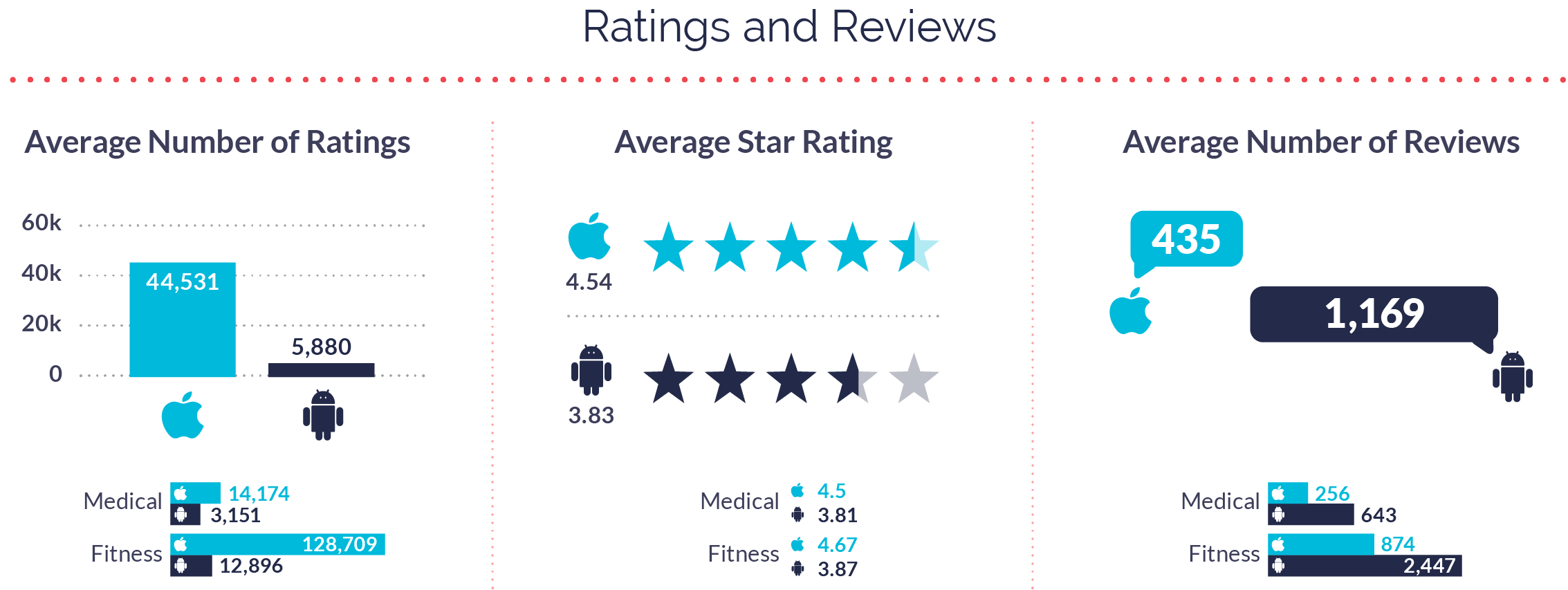
Similarly to previous years, iOS apps again enjoyed a higher overall rating; however, Android narrowed the gap between two in 2020, likely due to the new weighting system that Google employed in late 2019.

The big takeaway for Healthcare apps is while you can’t mitigate every negative rating or comment, having a plan in place to directly receive negative feedback will help you improve your numbers.
Retention
Unfortunately, Healthcare apps had low retention rates in 2020. Medical apps saw 90-day retention of 34% (macro average is 48%) and annual retention of 16% (macro average is 35%); Fitness apps saw 90-day retention of 31% and annual retention of 19%.
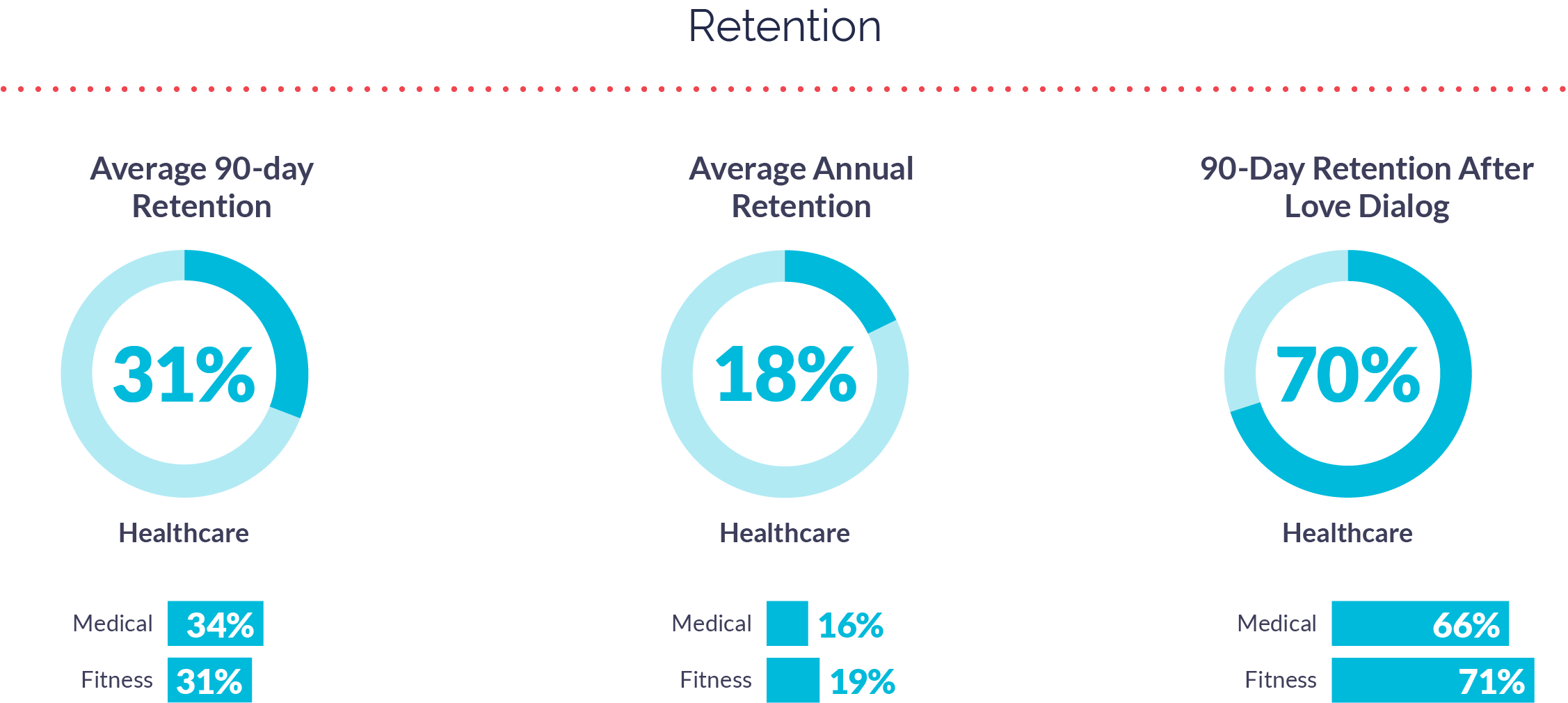
However, Healthcare consumers responded marvelously to brands who proactively asked for and acted on their feedback. Retention in both categories saw a huge increase after consumers were proactively engaged. When consumers saw a Love Dialog, their 90-day retention jumped to 66% in Medical (from 34%) and 71% in Fitness (from 31%).
Obviously many factors contributing to the drops in Healthcare app retention were outside of mobile teams’ control. Health priorities collectively shifted in 2020, and the change is reflected in our data. While low retention is concerning, it is a solvable problem for mobile teams in 2021 as people slowly begin to navigate what “normal” engagement with Healthcare apps looks like.
Interaction and Response Rates
COVID-19 obviously had a strong impact on Healthcare app interactions. While MAU in Healthcare apps went up, the number of interactions went down (Fitness) or stayed about the same (Medical).
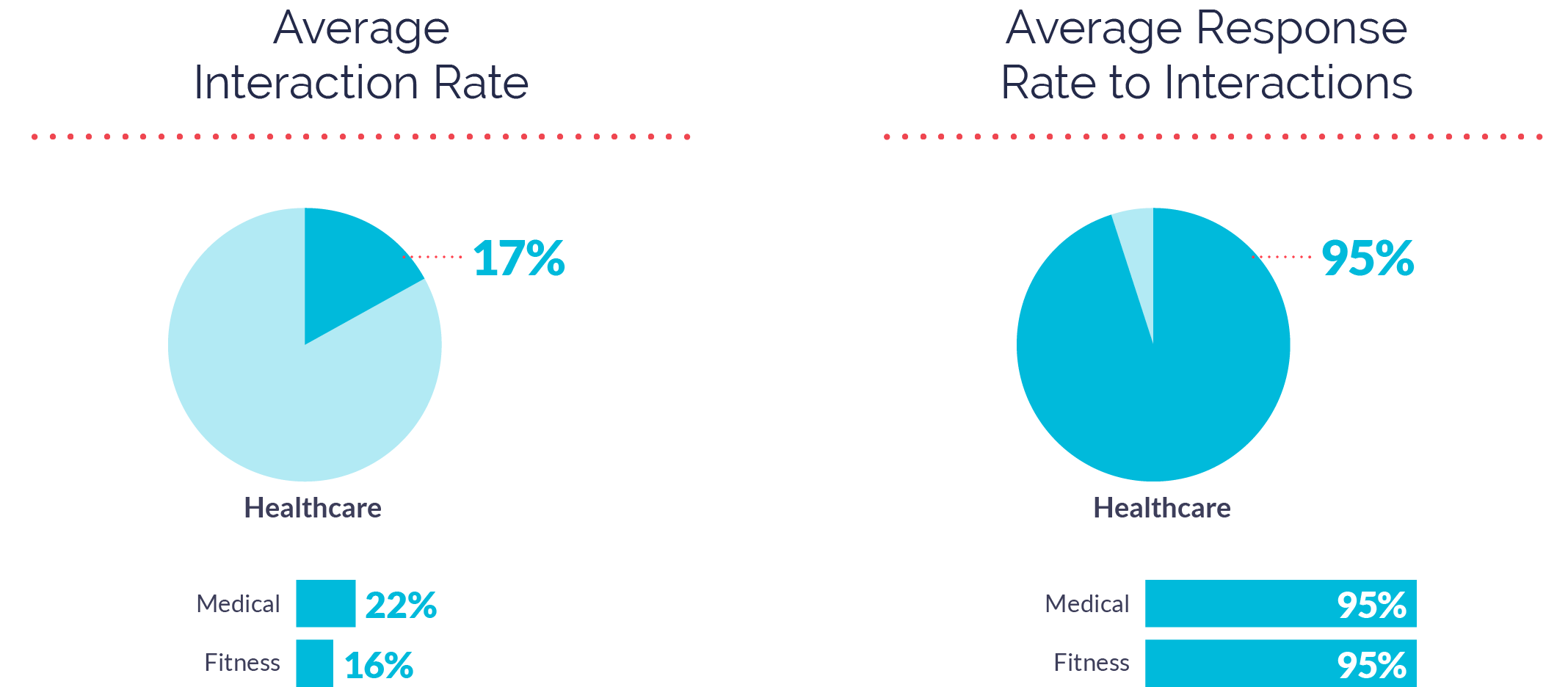
The slowed interactions likely occurred due to companies thinning out their communications to deprioritize non-essential tasks and messages in order to prioritize COVID-related messaging. But while interactions were lower than the macro average, average response rates were higher in both Medical (95%) and Fitness (95%) than the macro average of 92%.
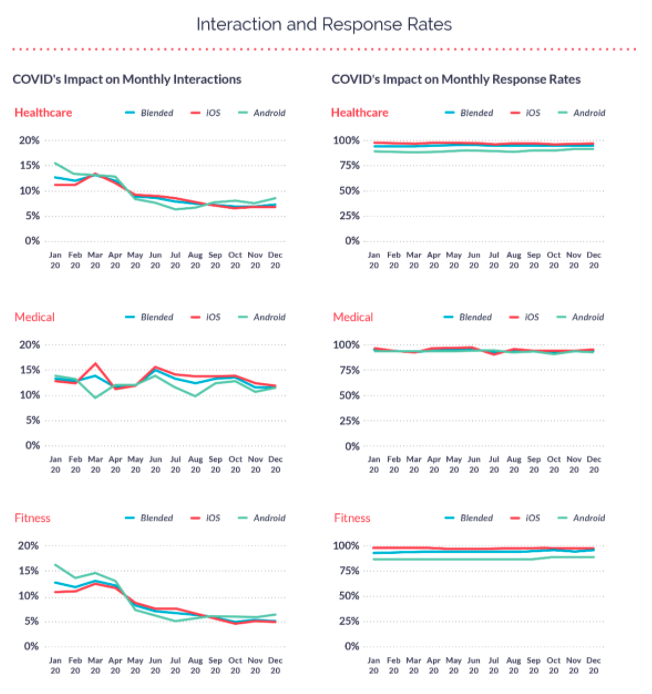
That said, Healthcare mobile teams deserve immense credit for their extremely high response rates (95% across all subcategories) that held steady throughout the year. These teams clearly understand that when consumers reach out, responding to understand and act on emotion is the best strategy.
Mobile Consumer Sentiment
Gauging sentiment starts with understanding customer emotion. Alchemer Mobile (formerly Apptentive)’s Love Dialog feature is used to gather the data, which starts with a simple “yes” or “no” question: “Do you love our company?”
Healthcare apps’ consumer sentiment was slightly higher than macro averages across Love Dialog conversion rate and Love Percent. In 2020, 96% of consumers who were prompted by a Love Dialog responded “Yes” or “No” rather than closing out of the prompt. 70% of consumers prompted responded that “Yes,” they loved the company.
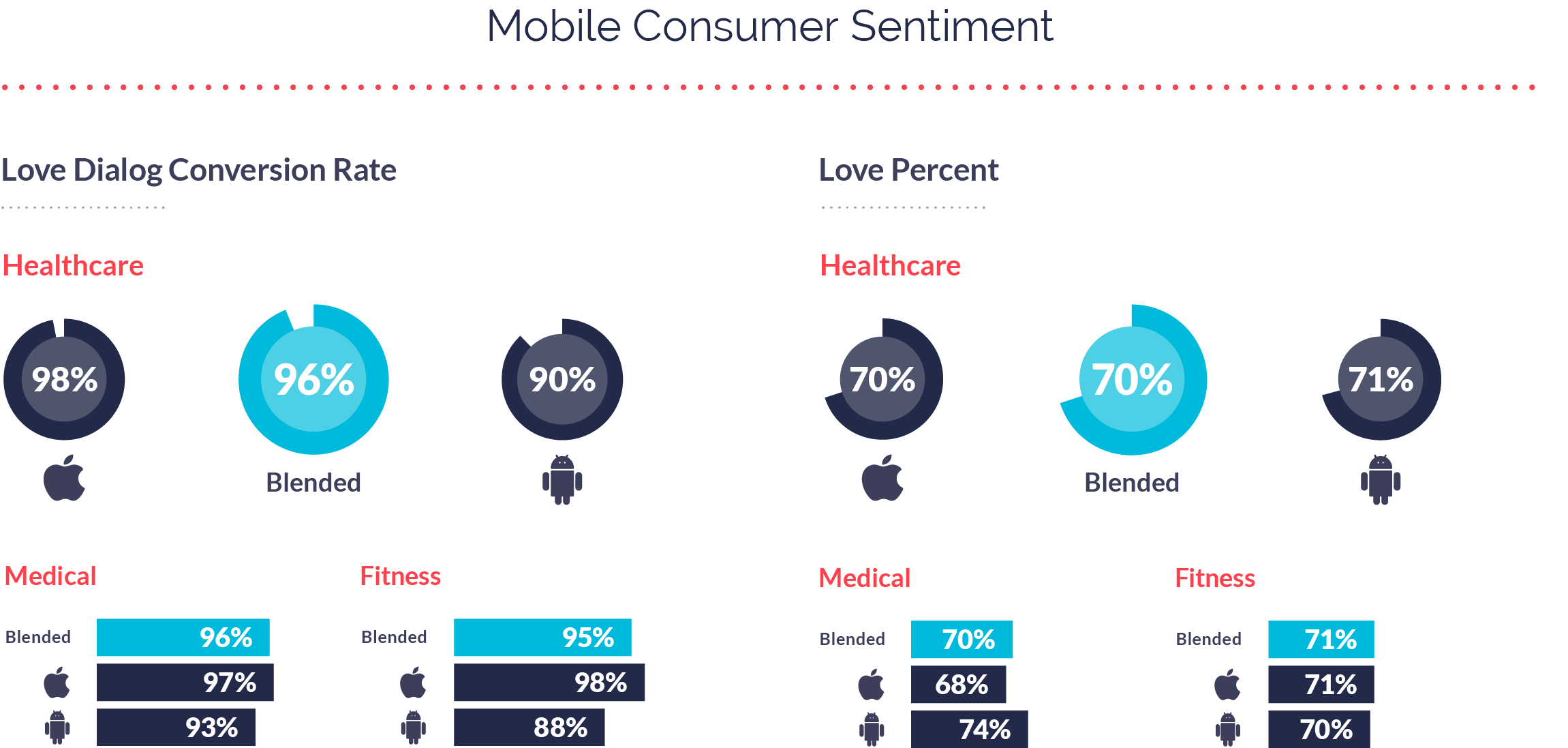
However, the retention gap between Fans and Risks broadened in Healthcare, and Risks were more likely to churn than Fans. This was not the case at the macro level where risk of churn was almost equal for Fans and Risks. Understanding why this disparity exists and getting ahead of it is a focus area for Healthcare mobile teams in 2021.
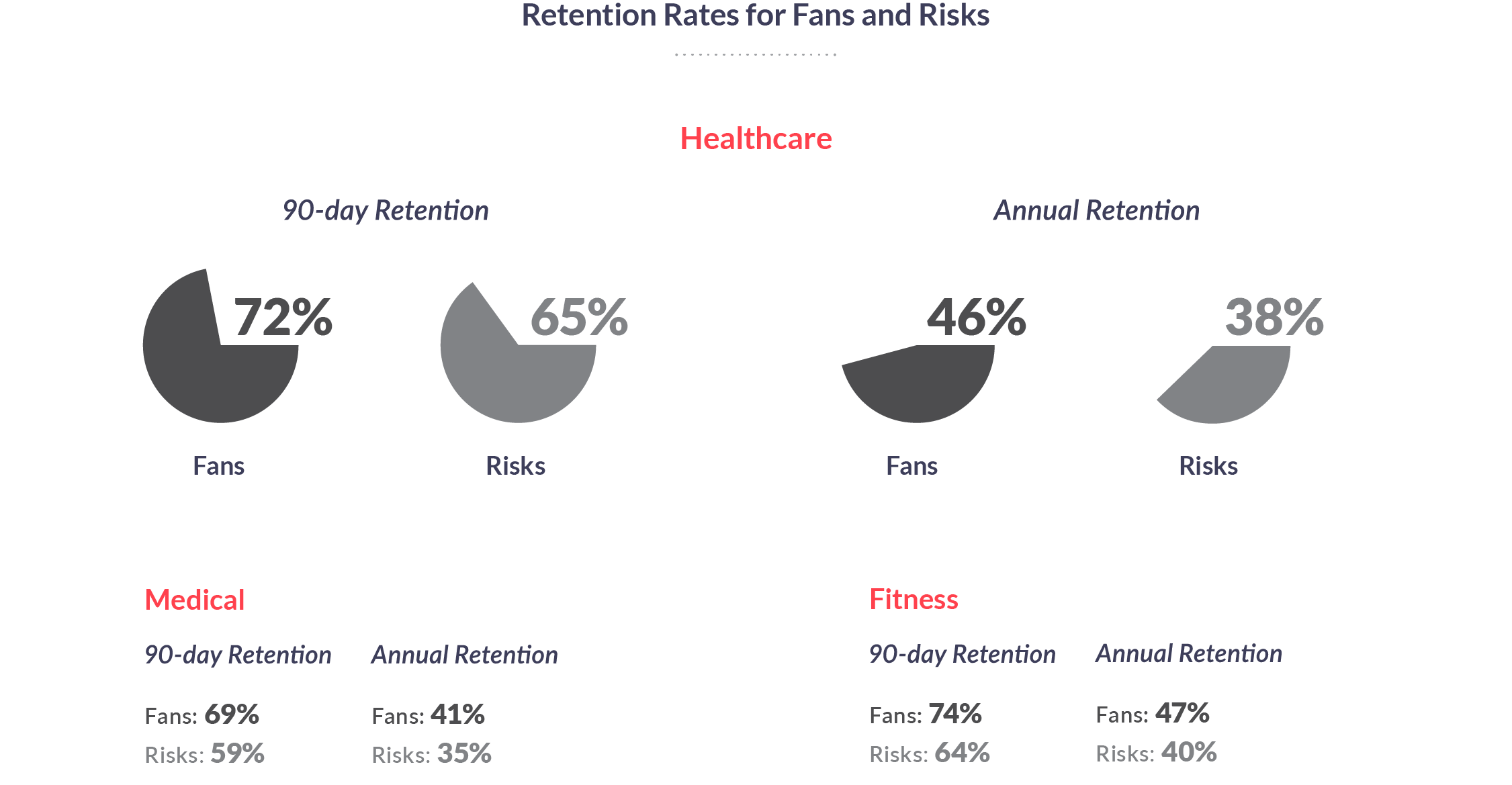
Surveys and Messages
Average survey response rates were a low 9% for Healthcare apps. Medical apps saw a 14% response rate and Fitness apps saw a 5% response rate, both lower than the 16% macro average—but still much higher than the industry average of 1%.
However, not all surveys are delivered in the same way, and when consumers are given the choice to opt in or out, response rates improve. When surveys were introduced with an Alchemer Mobile (formerly Apptentive) Note, Healthcare apps saw their response rates rise to 57%.
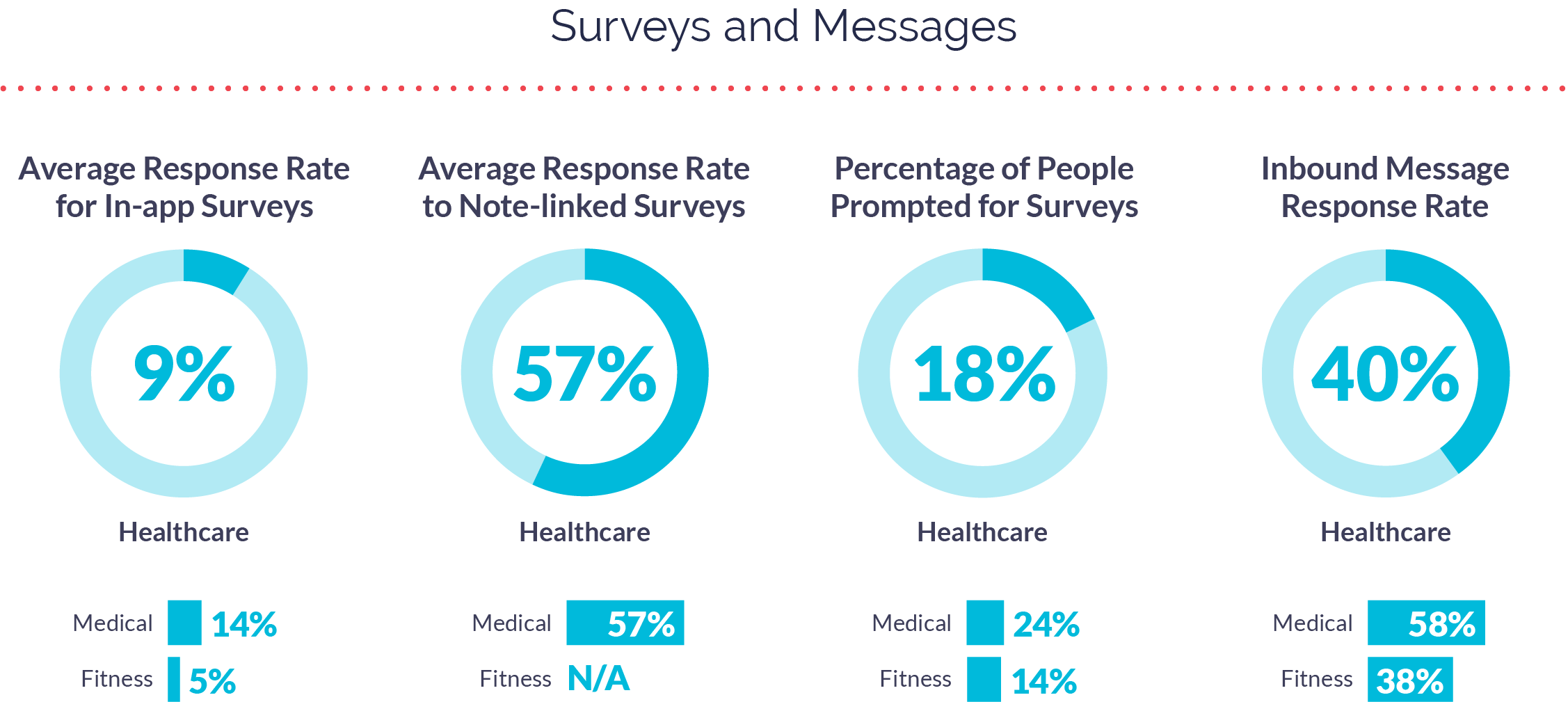
Popular Phrases
Shifting our focus to app store reviews, here are the 10 most popular phrases for both iOS and Android throughout 2020.
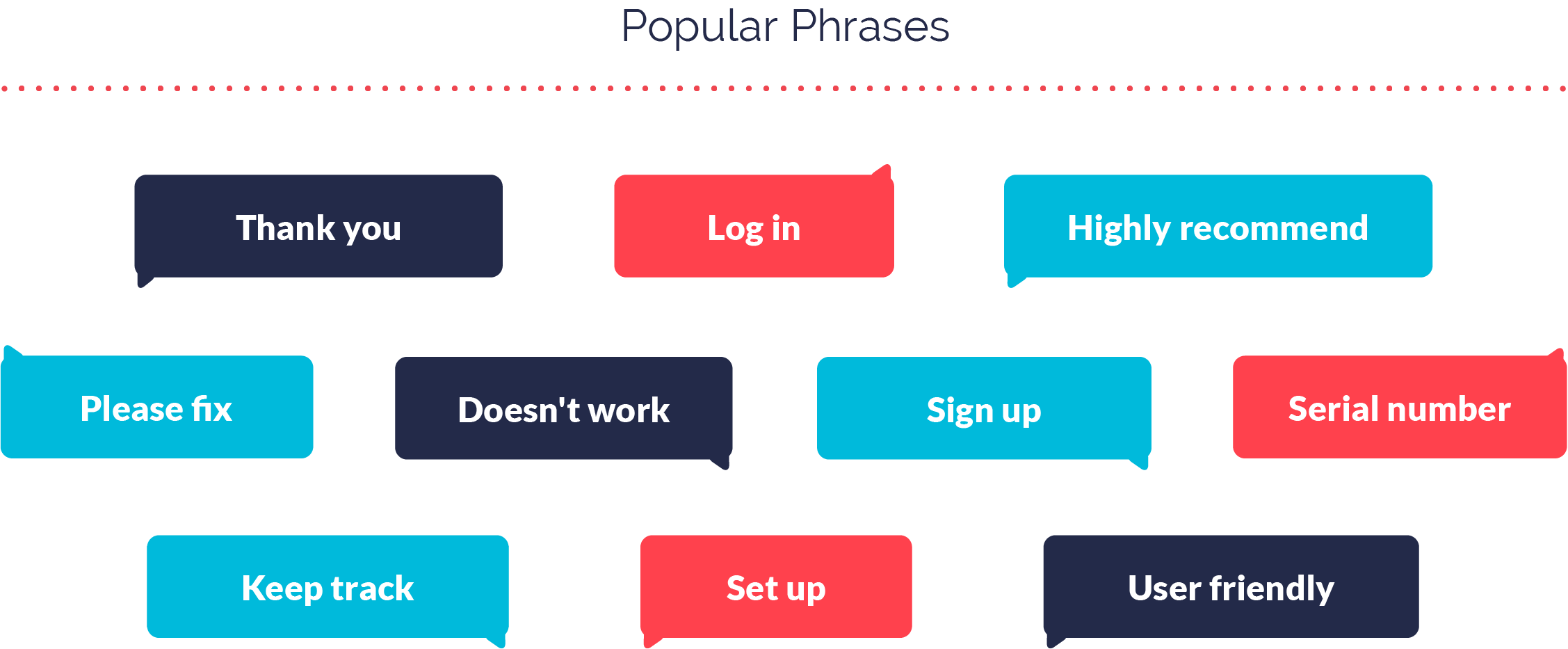
When we layer on sentiment distribution, you can see the difference between negative, neutral, and positive sentiment across app store reviews. The Healthcare app category is especially prone to negative sentiment through reviews due to the nature of their business; it’s easy for consumers to leave frustrated feedback in the moment, and even easier for them to forget about positive experiences once they conclude.
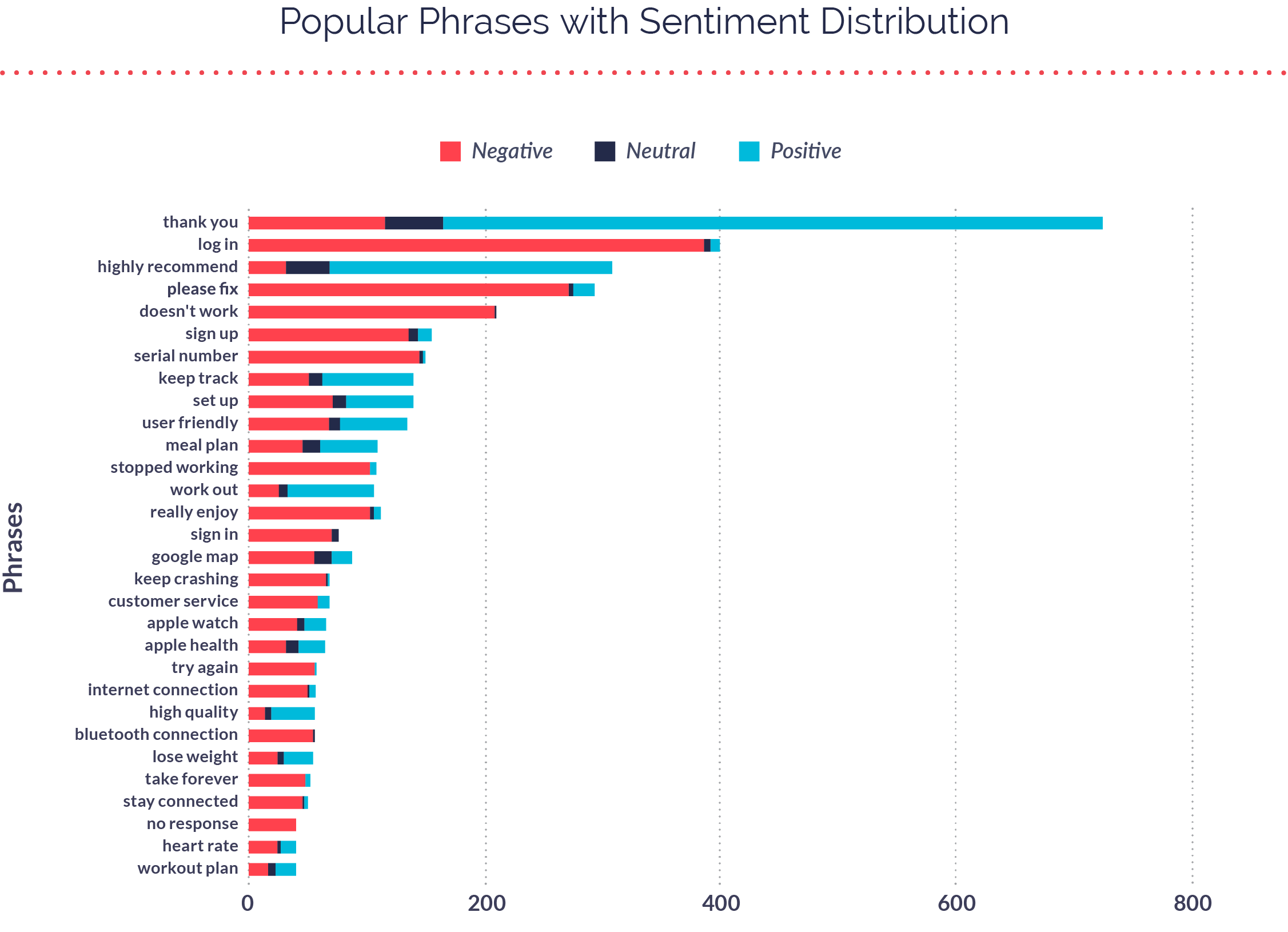
Working in Mobile Healthcare in 2021
As the data shows, Healthcare apps are beginning to recover from their 2020 shakeup, but still have a long road ahead. 2021 will be a year of repair for Healthcare apps as we begin to determine the “new normal” in doctor-patient mobile interaction, and as consumers begin to resume broader healthcare-related activities.
For more on how mobile teams in Healthcare can win back market share and improve feedback-based innovation, read our 2021 Mobile App Engagement Benchmark Report.

